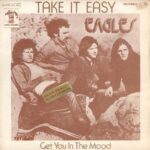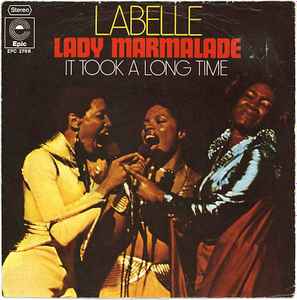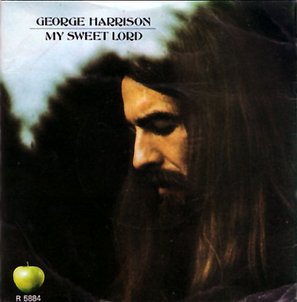 Few songs in the history of American rock capture the spirit of open roads, restless hearts, and laid-back cool as perfectly as “Take It Easy” by the Eagles. Released in May 1972 as the band’s debut single, this breezy yet sharply crafted tune not only introduced the world to one of the most successful rock groups of all time, it also crystallized a distinctly West Coast sound that would dominate the decade. With its seamless blend of country twang, folk harmonies, and rock drive, “Take It Easy” became both a mission statement and a cultural touchstone—a reminder to slow down, enjoy the journey, and find beauty in life’s uncertainties.
Few songs in the history of American rock capture the spirit of open roads, restless hearts, and laid-back cool as perfectly as “Take It Easy” by the Eagles. Released in May 1972 as the band’s debut single, this breezy yet sharply crafted tune not only introduced the world to one of the most successful rock groups of all time, it also crystallized a distinctly West Coast sound that would dominate the decade. With its seamless blend of country twang, folk harmonies, and rock drive, “Take It Easy” became both a mission statement and a cultural touchstone—a reminder to slow down, enjoy the journey, and find beauty in life’s uncertainties.
More than fifty years later, the song still feels fresh. Whether drifting from a car stereo on a summer highway or closing out a festival set, “Take It Easy” retains a warmth and optimism that defies trends. To fully understand its enduring magic, we need to look at its creation, the artists who shaped it, its impact on the Eagles’ career, and the way it continues to resonate across generations.
The Early 1970s: A New American Sound
The late 1960s had been a whirlwind of social upheaval and musical experimentation. Psychedelia, political folk, and hard rock had reshaped the pop landscape. By the early 1970s, many listeners craved something more reflective—music that spoke to freedom and possibility without the heaviness of protest anthems or the chaos of acid rock. Into this environment came a new hybrid: country rock, pioneered by artists like The Byrds, Buffalo Springfield, and the Flying Burrito Brothers. These musicians married the storytelling traditions of country music with rock’s energy, creating songs that felt both earthy and modern.
The Eagles emerged directly from this scene. Glenn Frey and Don Henley, two ambitious young musicians trying to make their mark in Los Angeles, met while backing Linda Ronstadt during a 1971 tour. They soon formed a band with guitarist Bernie Leadon (a veteran of the Burritos) and bassist Randy Meisner, combining their shared love of harmonies with a keen sense of pop craftsmanship. Before they even had an album, they needed a song that would introduce their style to the world.
Writing “Take It Easy”: A Jackson Browne Connection
The seed of “Take It Easy” came from Jackson Browne, a rising singer-songwriter who shared an apartment building with Glenn Frey in L.A.’s Echo Park neighborhood. Browne had been working on a song about the restless life of a traveling musician, but he was struggling to finish the second verse. Frey, who often listened to Browne writing through the thin apartment walls, was captivated by the melody and the opening lines:
“Well, I’m a-running down the road tryin’ to loosen my load / I’ve got seven women on my mind.”
Browne and Frey began collaborating, trading lines and refining the structure. Frey contributed the now-famous second verse about “standing on a corner in Winslow, Arizona”, inspired by his own road experiences. The image of a lone traveler encountering a mysterious woman in a flatbed Ford perfectly captured the song’s blend of wanderlust and romantic intrigue. With Browne’s blessing, the Eagles recorded the tune for their debut album, giving Frey his first turn as lead vocalist.
Recording the Classic
The Eagles recorded “Take It Easy” in early 1972 at London’s Olympic Studios with producer Glyn Johns, known for his work with the Rolling Stones, Led Zeppelin, and The Who. Johns encouraged a clean, spacious sound that emphasized the group’s vocal blend. The arrangement is deceptively simple: crisp acoustic guitars, a steady backbeat, and tasteful electric fills. Yet every element serves the song’s easygoing message.
Bernie Leadon’s banjo adds a distinctive country flavor without tipping into pure bluegrass. Meisner’s melodic bass line keeps the groove buoyant, while Don Henley’s drumming provides a relaxed but driving pulse. Over it all, the band’s four-part harmonies create a shimmering backdrop, with Frey’s warm lead vocal striking the perfect balance between confidence and vulnerability.
The result is a recording that feels effortless yet meticulously crafted—a hallmark of the Eagles’ best work.
Lyrics of Wanderlust and Wisdom
At first glance, “Take It Easy” is a simple road song. The narrator is a restless traveler, juggling romantic entanglements and seeking peace of mind. But beneath its breezy exterior lies a subtle philosophy. The chorus offers a mantra for modern life:
“Take it easy, take it easy
Don’t let the sound of your own wheels drive you crazy.”
The “sound of your own wheels” is more than literal road noise—it’s a metaphor for the anxieties of ambition, love, and self-doubt. The song urges listeners to slow down and embrace the journey rather than obsess over the destination. In the early 1970s, when many young Americans were searching for meaning after the turbulence of the previous decade, this message resonated deeply.
The verses are filled with vivid, almost cinematic imagery: the corner in Winslow, the flatbed Ford, the open highway. These details give the song a sense of place while reinforcing its themes of freedom and possibility. It’s no wonder that fans still make pilgrimages to Winslow, Arizona, where a statue and mural commemorate the famous line.
Release and Reception
“Take It Easy” was released in May 1972 as the Eagles’ debut single, backed with “Get You in the Mood.” It quickly gained traction on FM radio, climbing to No. 12 on the Billboard Hot 100. The song’s irresistible chorus and sunny vibe made it a natural fit for both rock and pop stations, helping the band reach a wide audience right out of the gate.
Critics praised the track for its polished yet organic sound. Rolling Stone called it “a near-perfect synthesis of rock drive and country charm,” while radio DJs championed its feel-good message during a time when listeners were hungry for optimism. The single’s success paved the way for the Eagles’ self-titled debut album, which would go gold and establish them as a major force in the burgeoning country-rock movement.
A Signature Song and Concert Staple
From their earliest tours, “Take It Easy” became a centerpiece of the Eagles’ live shows. Its sing-along chorus and jangly guitars made it the ideal opener, setting a welcoming tone for audiences. Glenn Frey often introduced the song with a story about his friendship with Jackson Browne, reinforcing the collaborative spirit that defined the band’s early years.
Even as the Eagles’ sound evolved toward slicker rock productions in the mid-1970s, “Take It Easy” remained a constant in their setlists. After Frey’s passing in 2016, the song took on even deeper significance. When the band performed it on subsequent tours—with Frey’s son Deacon often handling lead vocals—it served as both tribute and celebration, a reminder of the joy Frey brought to millions.
Cultural Impact: Winslow, Arizona and Beyond
Few songs have left such a literal mark on the American landscape. The mention of “standing on a corner in Winslow, Arizona” turned a quiet Route 66 town into a tourist destination. In 1999, Winslow unveiled a “Standin’ on the Corner Park,” complete with a life-size statue and mural depicting a flatbed Ford. Visitors from around the world stop to snap photos and sing a few bars, keeping the song’s spirit alive.
“Take It Easy” has also appeared in countless films, TV shows, and commercials, from Jerry Maguire to The Big Lebowski, often used to evoke a sense of carefree adventure. Its warm harmonies and road-trip imagery make it a natural soundtrack for scenes of travel and self-discovery.
The Birth of the “California Sound”
Perhaps the most enduring legacy of “Take It Easy” is its role in defining the California sound of the 1970s. Alongside contemporaries like Fleetwood Mac and the Doobie Brothers, the Eagles helped popularize a style that blended rock, country, and folk with smooth vocal harmonies and polished production. This sound dominated radio throughout the decade, influencing everyone from Jackson Browne to Linda Ronstadt and even later acts like Tom Petty.
“Take It Easy” served as the blueprint. Its relaxed tempo, sunny harmonies, and cross-genre instrumentation showed that country rock could be both radio-friendly and artistically sophisticated. Without this song’s success, it’s hard to imagine the Eagles reaching the heights they would later achieve with albums like Hotel California and The Long Run.
Jackson Browne’s Own Version
Although the Eagles made the song famous, Jackson Browne eventually recorded his own version for his 1973 album For Everyman. His take is more understated, with a slightly slower tempo and a warmer, folkier vibe. Browne’s performance highlights the reflective side of the lyrics, offering a more introspective counterpoint to the Eagles’ breezy optimism. Hearing both versions side by side reveals the song’s versatility and the unique strengths of each artist.
Enduring Appeal
Why does “Take It Easy” still resonate after more than five decades? Part of the answer lies in its universal message. Everyone, at some point, feels the pressure of life’s “wheels”—whether it’s work, relationships, or personal ambition. The song’s gentle reminder to slow down and enjoy the ride never goes out of style.
Musically, it remains a masterclass in accessible songwriting. The melody is instantly memorable, the arrangement perfectly balanced, and the harmonies timeless. It’s the kind of song that parents can share with their children, bridging generations through shared experience.
Legacy in the Eagles’ Career
For the Eagles, “Take It Easy” was more than just a hit single—it was the foundation of their identity. The success of their debut album gave them the confidence and resources to pursue bigger ambitions. Over the next decade they would release a string of multiplatinum albums, from Desperado to Hotel California, becoming one of the most successful bands in music history.
Yet even as their sound grew more sophisticated, they never lost the straightforward charm of their first hit. In many ways, “Take It Easy” remains the purest expression of what the Eagles represented: impeccable musicianship, rich harmonies, and a distinctly American blend of wanderlust and wisdom.
Conclusion: A Song for All Roads
“Take It Easy” is more than a classic rock staple. It’s a cultural landmark, a philosophy set to music, and the song that introduced the world to the Eagles’ unique alchemy of country, folk, and rock. From its humble beginnings in a shared Los Angeles apartment to its status as an enduring anthem of freedom, it continues to invite listeners to slow down, breathe deeply, and savor the ride.
Whether you’re standing on a corner in Winslow, Arizona, cruising down a sun-baked highway, or simply navigating the twists and turns of everyday life, the song’s message still rings true:
“Lighten up while you still can / Don’t even try to understand / Just find a place to make your stand and take it easy.”
Half a century later, those words feel as necessary as ever.


